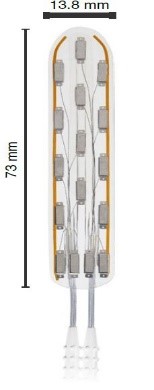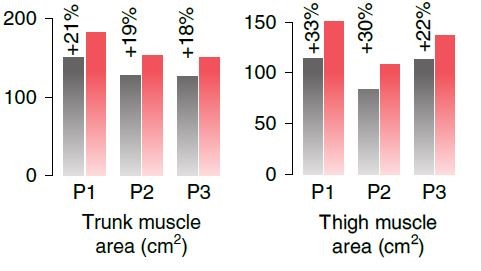In Zusammenarbeit mit Anna Coordt

Scientists at the Universital Clinic in Lausanne (Centre hospitalier universitaire Vaudois-CHUV) accomplished outstanding research in the field of epidural electrical stimulation (EES). They developed a newly designed stimulation system existing out of 16 electrodes targeting the dorsal roots of lumbosacral segments to restore leg- and trunk movement in patients with severe spinal cord injury and paralysis. Foundation to this success is a new computational framework allowing an optimal placement of electrodes during neurosurgery as well as a newly developed software supporting the rapid configuration of activity-specific stimulation programs that reproduce the natural activation of motor neurons underlying each activity.
Bildquelle: Rowald et al. 2022
As part of a clinical trial the newly developed neurotechnology was tested in three individuals age 29, 32 and 41 years who had been exhibiting complete sensorimotor paralysis for three, nine and one year retrospectively before entering the trial. Already the first post-op-day with electrical stimulation on allowed all three participants to walk individually up to 300 steps on a tread mill, and, after less than a week of configuration, to walk over ground, a result that prior to this work had been accomplished with older stimulation systems after many months of intense neurorehabilitation. Besides this incredible success other motor activity functions like trunk stability, swimming or bicycling exhibited a great outcome as well.

After five months of neurorehabilitation, one participant could even climb the staircase. Objectively leg and trunk muscles improved massively overtime and two of the participants recovered the ability to move proximal muscles voluntarily with the electrical stimulation turned off, hypothesizing that the stimulation triggered signals from residual descending pathways. Even though this research‘s value is quite incredible it needs to be pointed out that the movement of the participants did not appear as natural as it should appear. Also designing the new stimulation electrode was based on tradeoffs, e.g. in fields of personalized electrodes or personalized paddle lead placements.

This research appears to be one of the first milestones in turns of allowing paralyzed patients to regain sensorimotor functions within the very first 24 hours after neurosurgery through epidural electrical stimulation. It is known that bladder- and bowl functions are also positively influenced by EES but it still remains an unsolved puzzle how to include cervical stimulation for additionally required electrodes, more voltage and thus more sufficient implantable generators (IPGs), that by now do not exist. In a perspective view, the solution might be the combination of electrical stimulation and recently shown positive benefits due to stem cell therapy to target multiple systems.
Quelle: Rowald, A., Komi, S., Demesmaeker, R. et al. Activity-dependent spinal cord neuromodulation rapidly restores trunk and leg motor functions after complete paralysis.Nat Med 28, 260–271 (2022). https://doi.org/10.1038/s41591-021-01663-5

